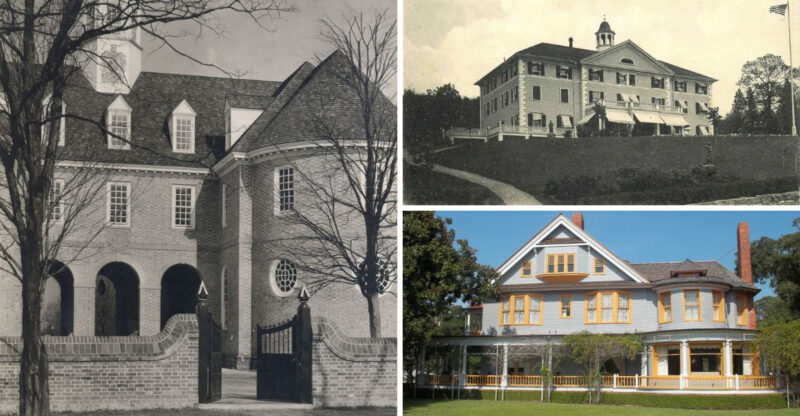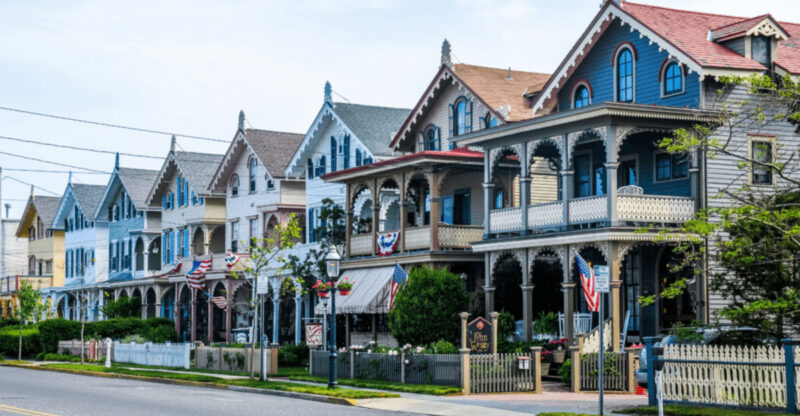16 Photos Frozen In Time Of A 300-Year-Old Weavers’ House
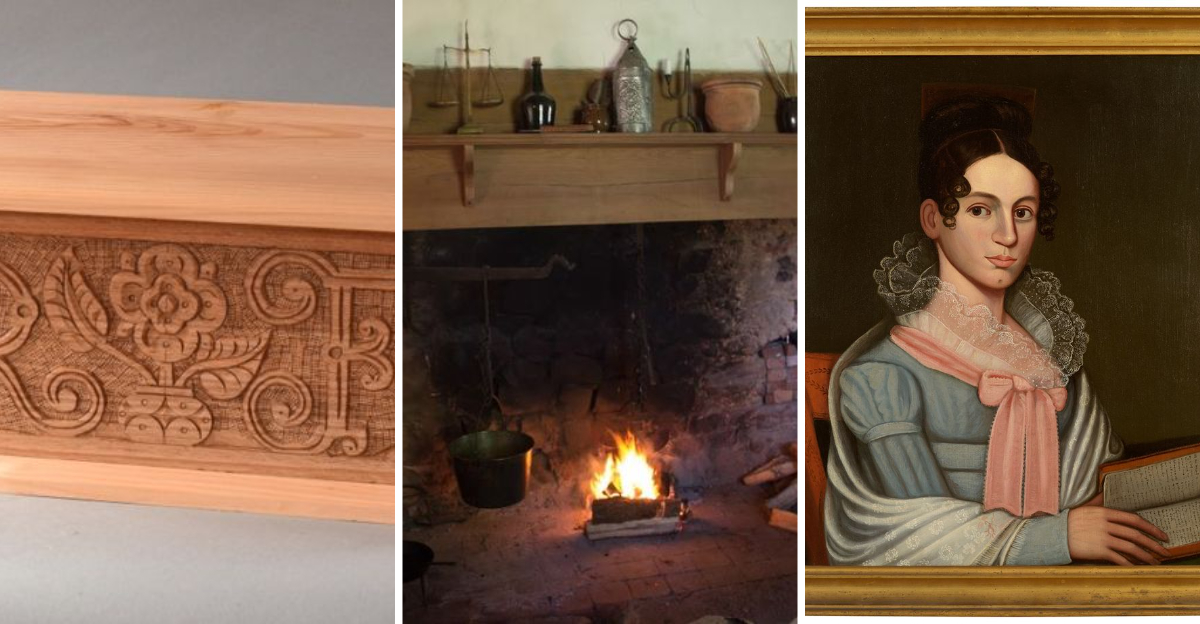
Step into a world where time stands still, where every creaking floorboard tells a story of bygone craftsmanship.
This 300-year-old weavers’ house has witnessed generations of skilled artisans transforming simple threads into beautiful fabrics.
Walking through its rooms feels like turning pages of a living history book, with each corner preserving memories of hardworking families who once called these walls home.
1. Loom Room
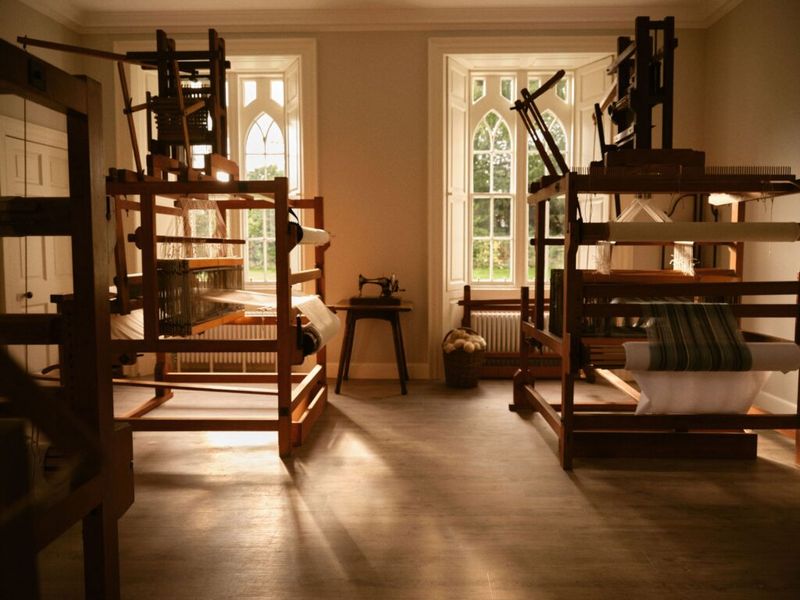
Walking into the loom room feels like stepping through a portal to another century. Massive wooden frames dominate the space, their intricate pedals and shuttles frozen mid-pattern as if the weaver just stepped away for lunch.
Sunlight streams through dusty windows, illuminating thousands of thread strands stretched tight across the looms. You can almost hear the rhythmic clacking that once filled this room from dawn till dusk.
Did you know these looms could produce up to 20 yards of fabric daily? Skilled weavers worked 12-hour days here, their fingers dancing across threads with practiced precision, creating textiles that would clothe families throughout the region.
2. Worn Beams
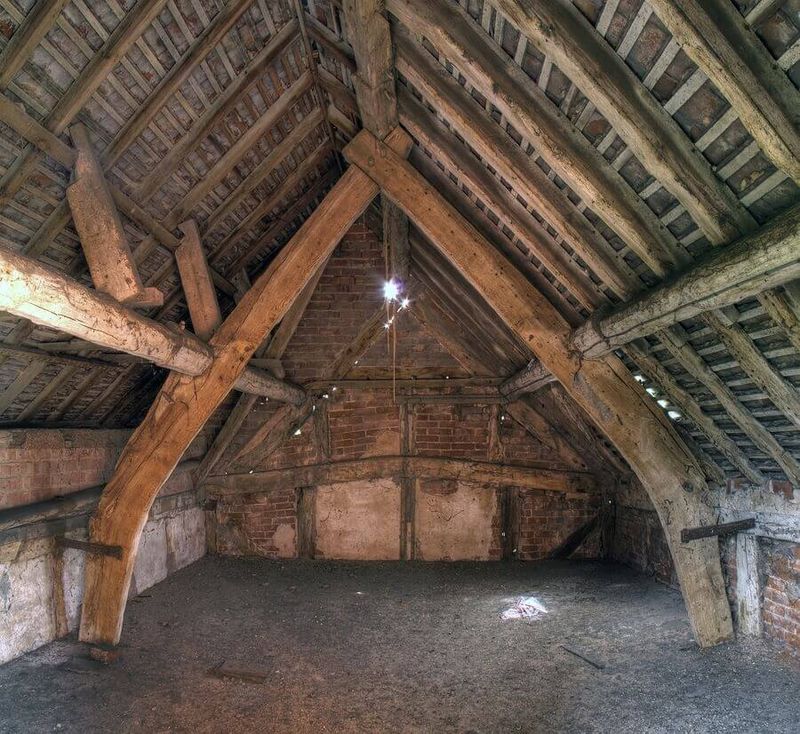
Overhead, massive oak beams tell silent stories of centuries past. Each crack and groove marks the passage of time – some beams visibly sagging from supporting the structure for three centuries.
It’s fascinating how craftsmen of the era joined these beams without modern tools, using mortise and tenon joints secured with wooden pegs. The darkened wood bears smoke stains from decades of hearth fires that once warmed the industrious families below.
Careful inspection reveals faded chalk marks where original builders made calculations. These ancient support timbers, harvested from nearby forests that no longer exist, have outlasted generations of the very people who installed them with such care.
3. Sunlit Window
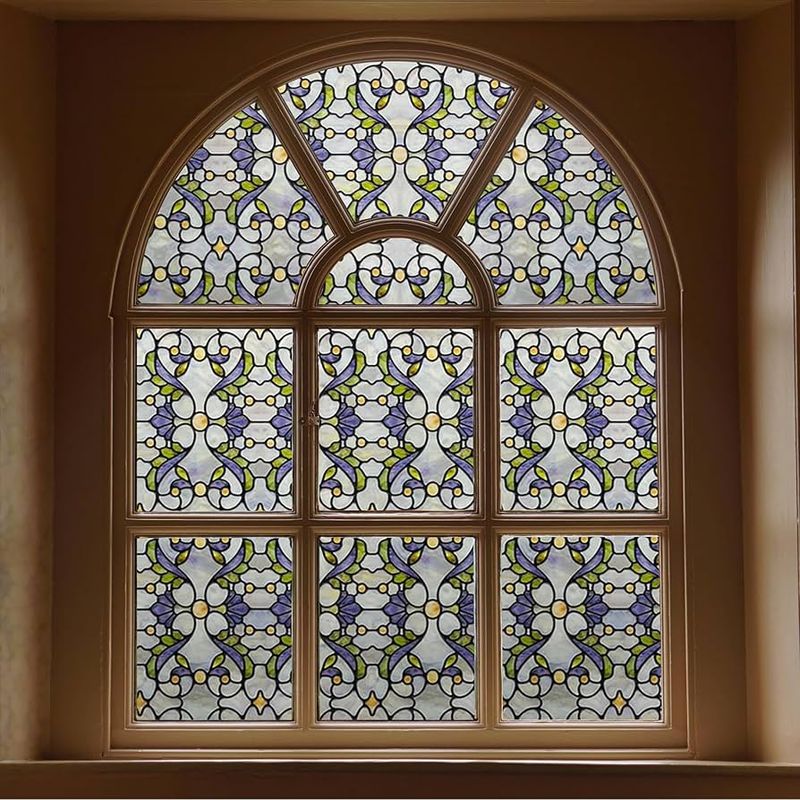
Light dances through wavy glass panes that distort the outside world into a dreamy landscape. These handblown windows, with their bubbles and imperfections, are original to the house – a rarity that historians treasure.
Weavers positioned their looms near these windows to capture precious natural light for their detailed work. The deep stone windowsills show centuries of wear, with small grooves where generations rested tools or cups of tea.
When the sun hits at just the right angle, the glass casts rainbow prisms across the worn wooden floor. Notice the tiny initials scratched into one corner pane – perhaps a bored apprentice’s mark from the 1700s, leaving their small signature for future centuries to discover.
4. Antique Spindles
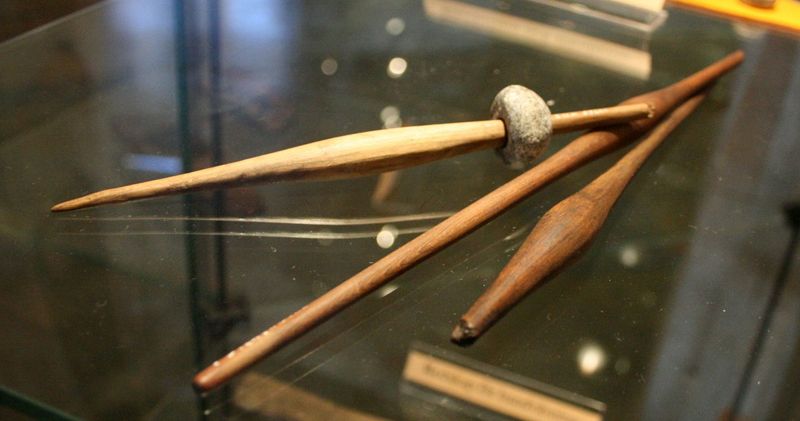
Arranged like soldiers on a weathered shelf, these wooden spindles once twirled endlessly in nimble hands. Each one tells a unique tale – some smooth from decades of use, others bearing notches where thread caught and snapped.
If you look closely, several spindles feature tiny carved initials of their owners. Women and children often worked these tools from dawn until their fingers ached, preparing thread for the larger looms.
How remarkable that such simple tools could produce such complex results! The varying sizes accommodated different thread weights, from sturdy wool for blankets to delicate silk for fine garments. One spindle still bears traces of indigo dye, a silent reminder of the vibrant blues once created in this very room.
5. Timeworn Stairs
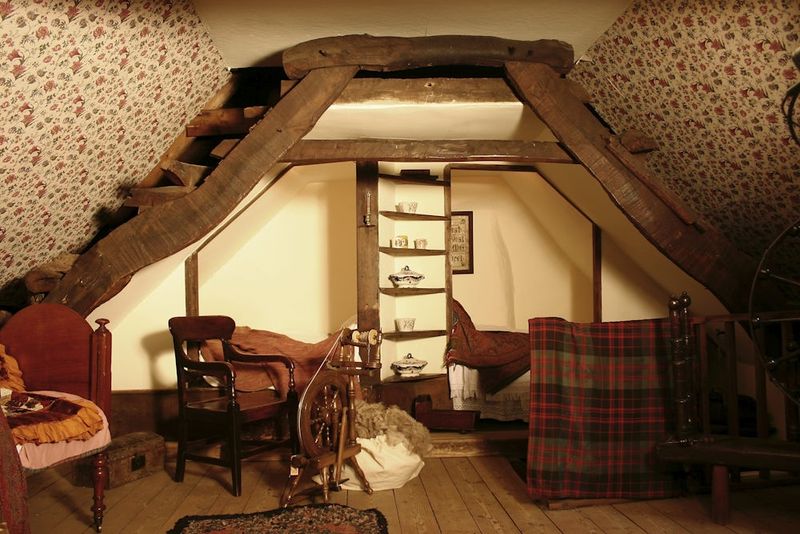
Each step dips dramatically in the center, carved into smooth bowls by countless feet over three centuries. The once-straight edges now curve inward, telling stories of hurried apprentices, tired masters, and children running errands between floors.
Though they creak loudly with every step, these oak stairs remain remarkably sturdy. Secret markings beneath the third step reveal where the original builder signed his name and dated his work April 1724.
When you place your hand on the banister, your fingers rest in the same polished grooves created by thousands of hands before yours. The stairs narrow as they climb, a common space-saving feature in homes of this era when every inch of living space needed to serve a practical purpose.
6. Dusty Shelves
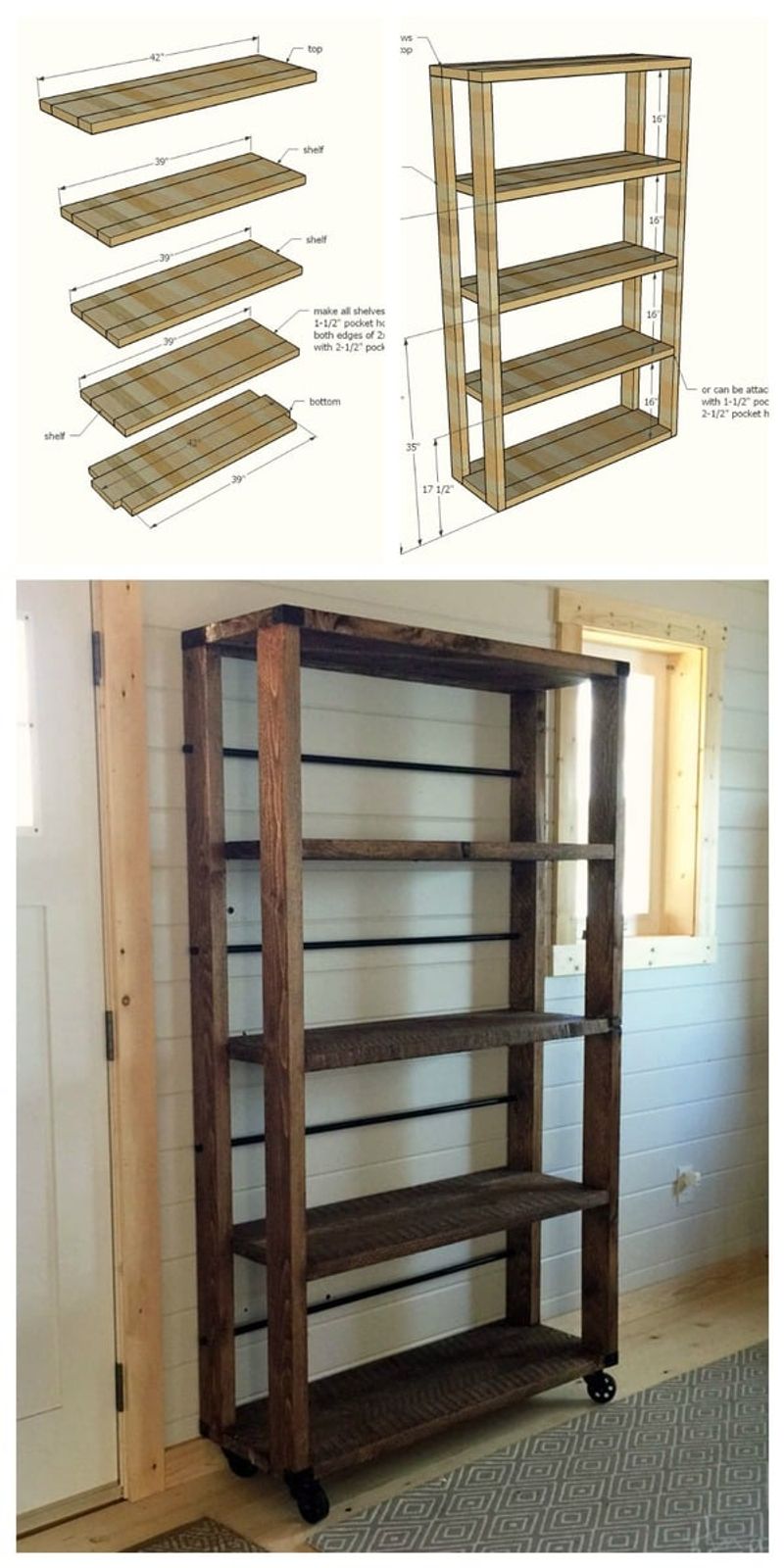
Lining the walls, these rough-hewn shelves once stored the precious fruits of daily labor. Thin layers of dust have settled into the wood grain, occasionally disturbed by museum caretakers but never truly removed.
Look at how the wood has warped over centuries, creating gentle waves across each shelf. Small labels still cling to some edges – faded handwriting detailing thread counts and fabric types that once filled these spaces.
Are those tiny footprints in the dust? Mice have been residents here almost as long as the human inhabitants. The shelves’ uneven heights accommodated different sized bundles and tools, showcasing the practical, no-waste mentality of the era when each piece of wood was hand-cut and valuable.
7. Faded Wallpaper
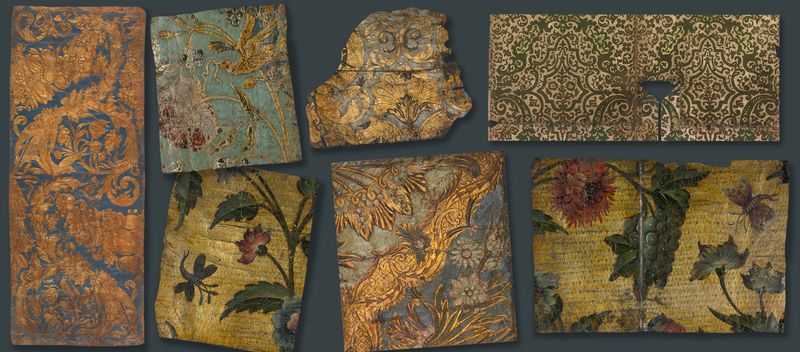
Clinging stubbornly to the plaster walls, patches of hand-printed wallpaper reveal the home’s former elegance. Once vibrant floral patterns have faded to ghostly outlines, with corners curling away after centuries of seasonal humidity changes.
This luxury item represented the family’s prosperity during the height of the weaving trade. Multiple layers peek through in certain spots, showing how successive generations updated their home as fashions changed.
The most intact section displays a delicate pattern of blue flowers likely printed using carved wooden blocks and indigo dye from the very workshop downstairs. Touch it gently and you can feel the slight texture of the hand-printing process, a tangible connection to the artisans who once applied these decorative touches with such care.
8. Forgotten Tools
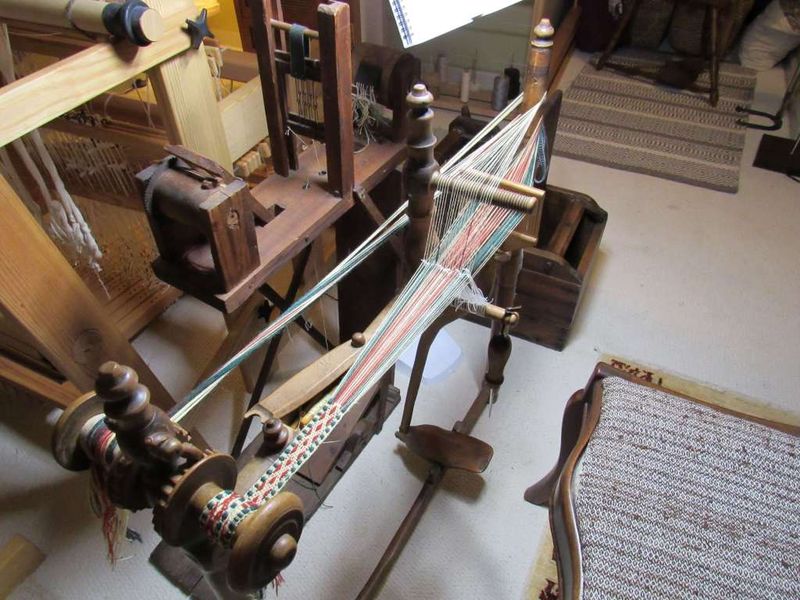
Scattered across a workbench, these mysterious implements speak of specialized skills now largely forgotten. Iron hooks with wooden handles, bone picks, and metal combs – each served a specific purpose in the complex weaving process.
The largest tool resembles a giant wooden comb with metal teeth, used for beating threads into place on the loom. Its handle shows deep indentations where the weaver’s hands gripped it thousands of times daily.
When restoration experts found these tools, many couldn’t identify their exact purpose. One particularly unusual implement – a curved bone needle with three eyes – stumped historians until an elderly visitor recognized it from stories passed down through generations of her weaving family. These humble objects represent knowledge that nearly disappeared with the industrial revolution.
9. Cobweb Corner
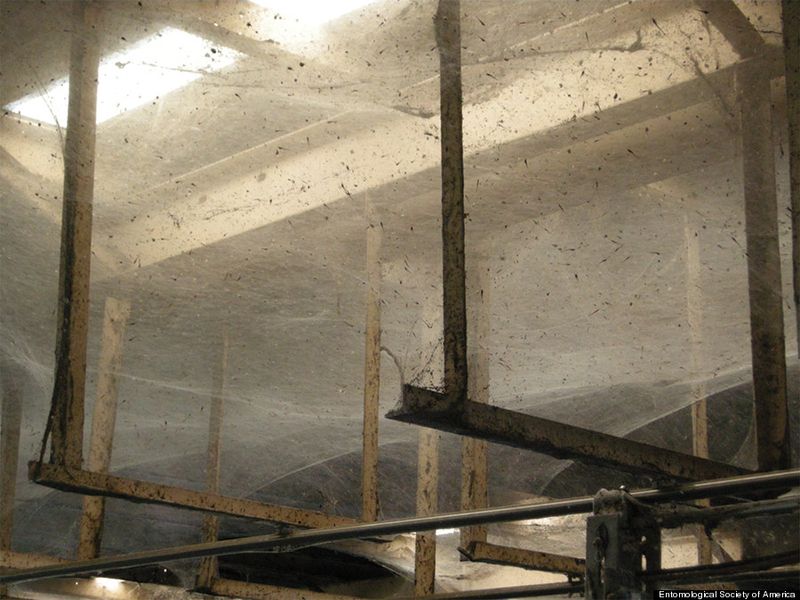
Nature’s own weavers have claimed this forgotten corner, creating delicate tapestries between ceiling beams. Generations of spiders have built upon each other’s work, creating a fascinating layered effect that conservators have chosen to preserve.
Sunlight catches the silken strands, transforming them into shimmering architectural wonders. Some webs have collected tiny particles of wool and thread that once filled the air during busy production days.
This corner remained untouched during restoration, serving as a poetic reminder of how quickly human spaces return to nature when abandoned. The spiders continue their ancient craft in this quiet corner, spinning patterns not unlike those created by the human weavers who once worked below them – a beautiful parallel between natural and human craftsmanship spanning centuries in the same space.
10. Weathered Door
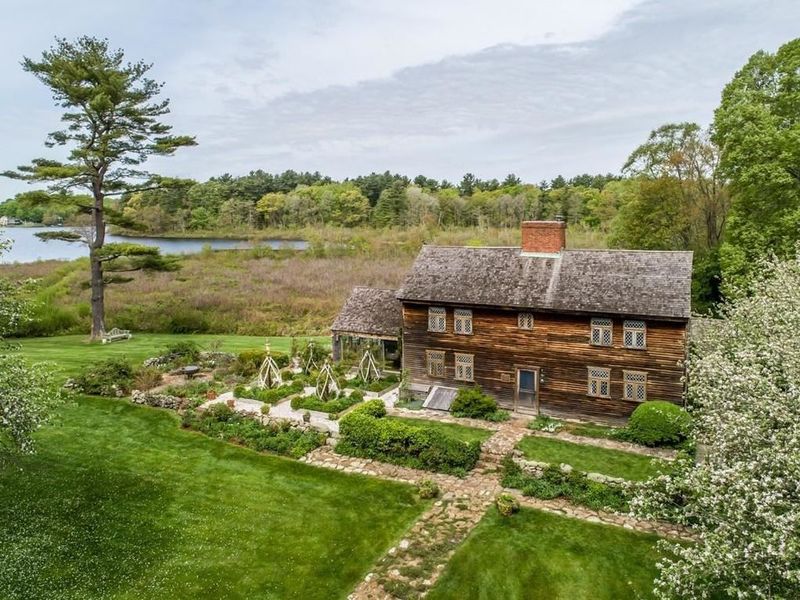
Standing sentinel between worlds, this oak door has guarded the threshold for three centuries. Its surface tells countless stories – deep gouges from furniture moves, smooth patches where hands pushed it open, and a curious series of notches marking children’s heights.
The iron hinges, hand-forged by a local blacksmith, have developed a rich patina that no modern finish could replicate. Someone carved the year 1722 into the lintel above, likely marking the home’s completion.
Though it appears simple, this door represents significant craftsmanship with its pegged construction and hand-carved panels. The original key, nearly eight inches long, still hangs nearby – a reminder of times when security meant something very different. Each scratch and dent represents a moment in the daily lives of those who passed through.
11. Rustic Hearth
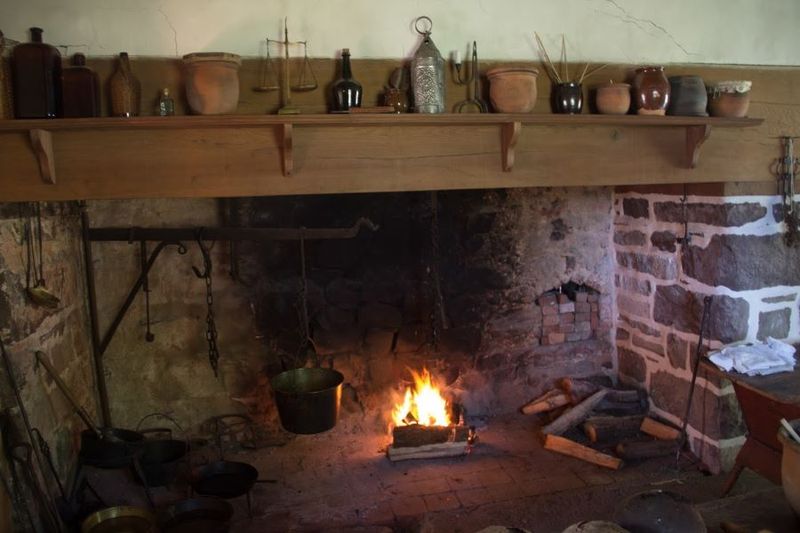
Centered in the main room, this massive stone fireplace once served as the heart of family life. Soot-blackened stones climb to the ceiling, bearing witness to thousands of meals cooked and winter nights endured.
The iron crane still swings out from the wall, where cooking pots once hung above flames. Families gathered here not just for warmth and food, but to work by firelight during dark winter evenings spinning, mending, and planning the next day’s weaving projects.
Sharp-eyed visitors might spot the small carved figures hidden among the stones good luck symbols placed by superstitious builders. This hearth burned continuously through harsh winters, with embers carefully banked each night to preserve precious fire until morning. The worn stones of the hearth floor have been replaced several times over centuries.
12. Stacked Yarns
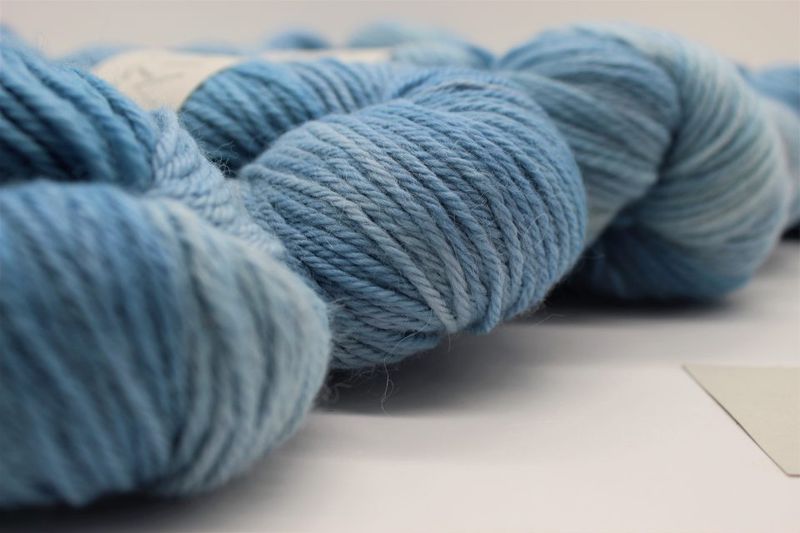
Carefully preserved in glass cases, these bundles of yarn represent the lifeblood of the weaving household. Though faded now, the natural dyes once showcased vibrant blues from woad, yellows from onion skins, and rich browns from walnut husks.
Each skein was painstakingly processed – from raw wool to finished thread. The family likely raised sheep themselves or traded with local farmers, then washed, carded, spun, and dyed every strand that passed through their looms.
Notice how some bundles remain remarkably intact while others have deteriorated. The best-preserved skeins were stored in special cedar boxes to protect from moths. Museum curators discovered handwritten tags attached to several bundles, noting the specific sheep that provided the wool – evidence of how intimately weavers knew their materials.
13. Framed Portraits
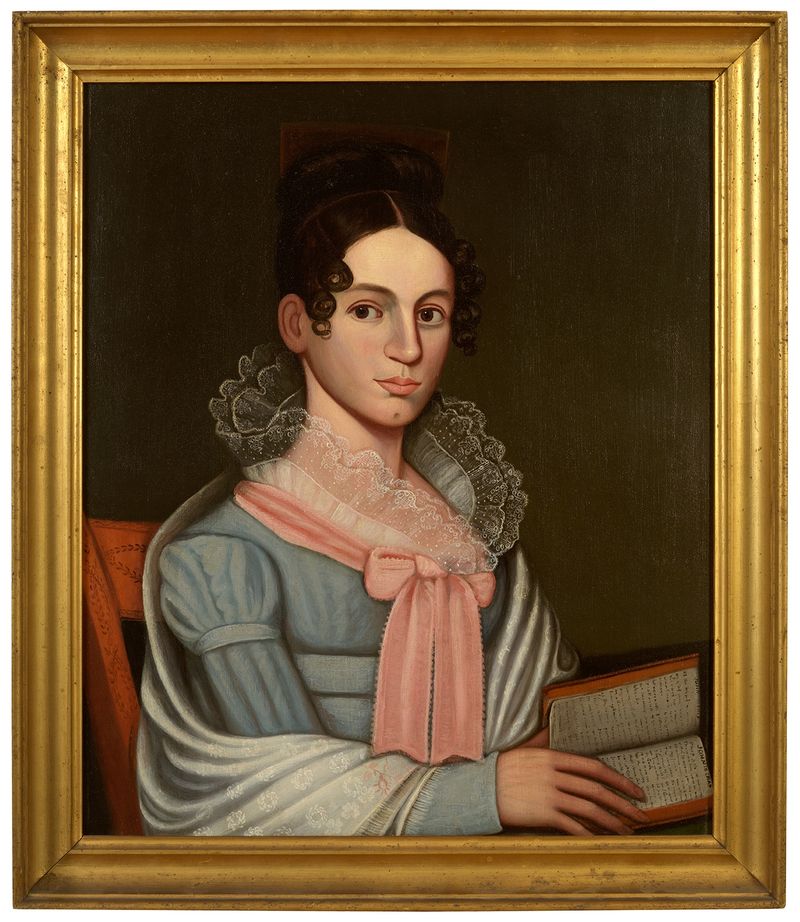
Stern faces gaze from smoke-darkened frames, preserving the likenesses of the master weavers who once ruled this household. Their expressions reveal little emotion – a common feature of early portraiture when sitting for a painting meant holding still for hours.
The largest portrait shows a bearded man holding a shuttle, symbolizing his trade. His wife appears in a separate frame, wearing a shawl likely woven in this very house. Their clothing speaks volumes about their social status – prosperous craftspeople rather than nobility.
Though not beautiful by modern standards, these portraits were treasured family possessions, passing down through generations until the house became a museum. X-ray analysis revealed earlier paintings underneath two of the portraits – the family reused expensive canvases when fashions changed or fortunes improved, another glimpse into practical household economics of the era.
14. Pattern Drafts
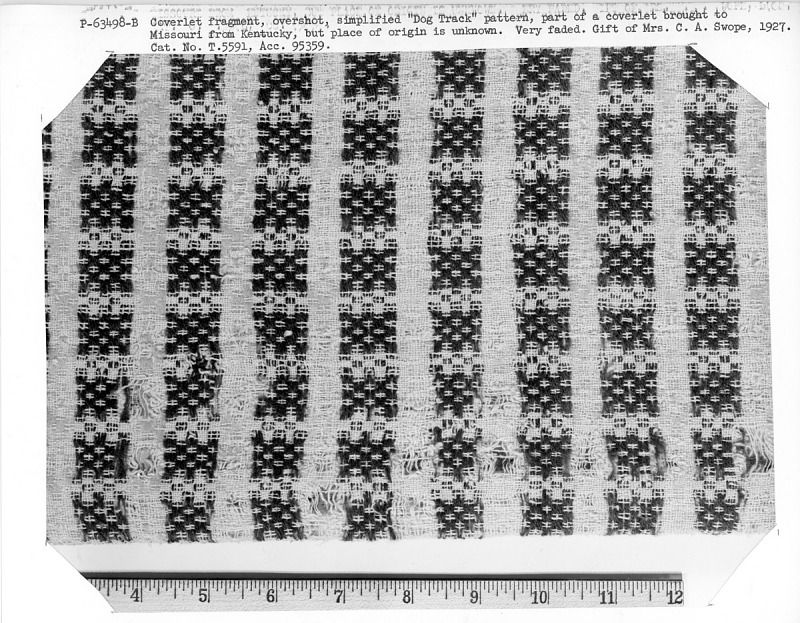
Yellowed papers covered in mysterious markings reveal the mathematical precision behind beautiful textiles. These pattern drafts were the intellectual property of master weavers – closely guarded secrets that could make or break a family business.
The largest sheet displays a complex diamond twill pattern with thousands of tiny squares representing thread crossings. Handwritten notes in faded ink crowd the margins, recording modifications and improvements developed through trial and error.
Many of these designs passed down through generations, with each weaver adding their own innovations. Some patterns bear names like “Mary’s Delight” or “Winter Stars,” suggesting personal meaning to their creators. The most complex designs required managing over 2,000 individual threads in precise sequences – an astonishing feat of mental calculation and manual dexterity performed daily in this humble workshop.
15. Wooden Chest
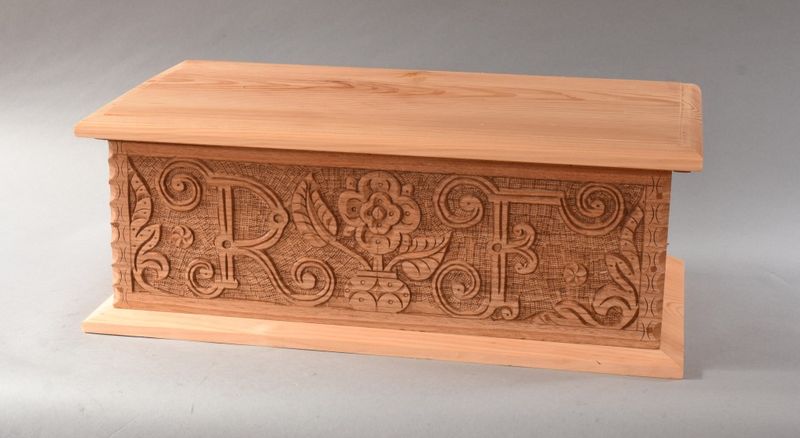
Squatting solidly in the corner, this massive oak chest protected the family’s most valuable possessions. Its iron-bound corners and heavy lock speak to the value of its contents – finished textiles, important documents, and perhaps small treasures.
The lid bears deep scratches from daily use, while the front features hand-carved tulips and vines. Someone has etched a family tree into the inner lid, with names and dates spanning five generations of weavers who owned this chest.
Hidden compartments in the base once concealed emergency money or valuable tools. During restoration, conservators discovered a child’s tiny leather shoe tucked into a secret drawer – a common good luck charm in the 18th century. This chest traveled with the family from their original home, representing stability and continuity through changing times.
16. Silent Hallway
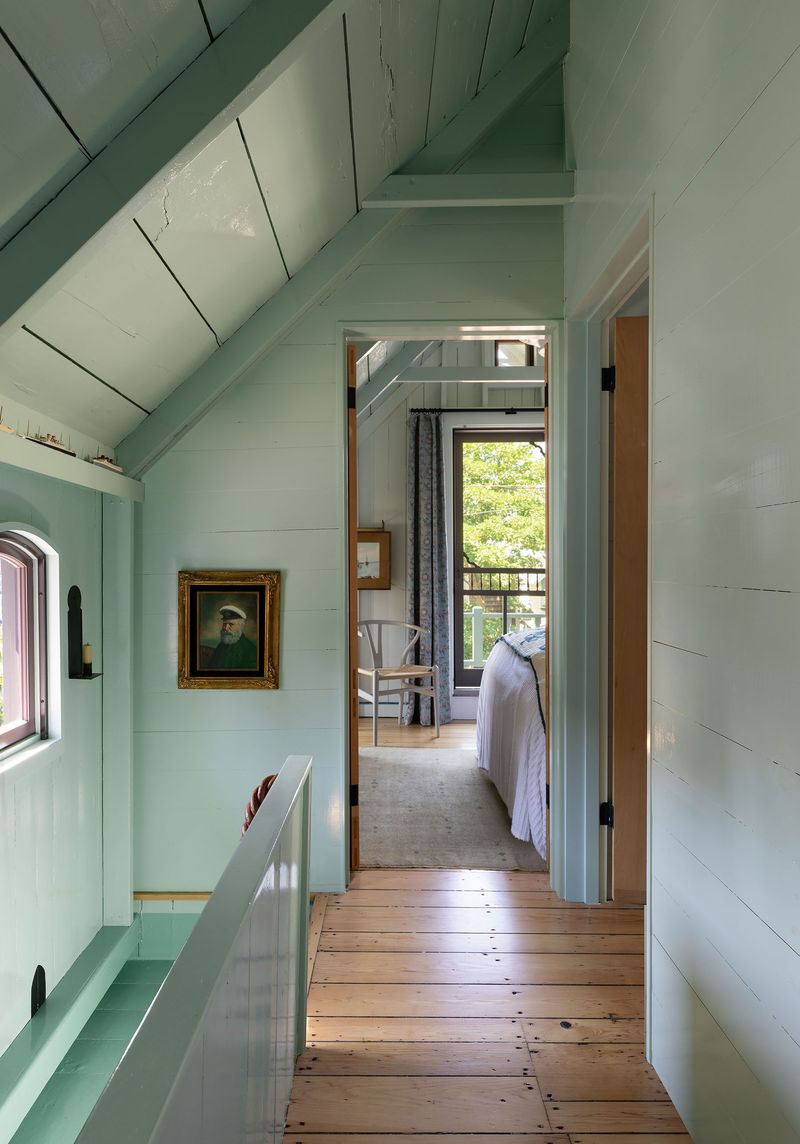
Connecting the public and private spaces of the house, this narrow passage bears the marks of countless journeys. Floorboards have worn into subtle valleys where feet traveled the same paths day after day, year after year.
Light filters dimly through a small, bullseye glass window at one end, casting circular patterns that travel across the walls as the sun moves. The plaster walls lean slightly inward, having settled over centuries into a gentle embrace.
Though empty now, hooks along one wall once held cloaks, hats and tools. Listen carefully and you might imagine the echoes of hurried footsteps, children’s laughter, or tired sighs at day’s end. This transitional space witnessed the rhythms of daily life the first footsteps at dawn and the last weary shuffles before bed.

